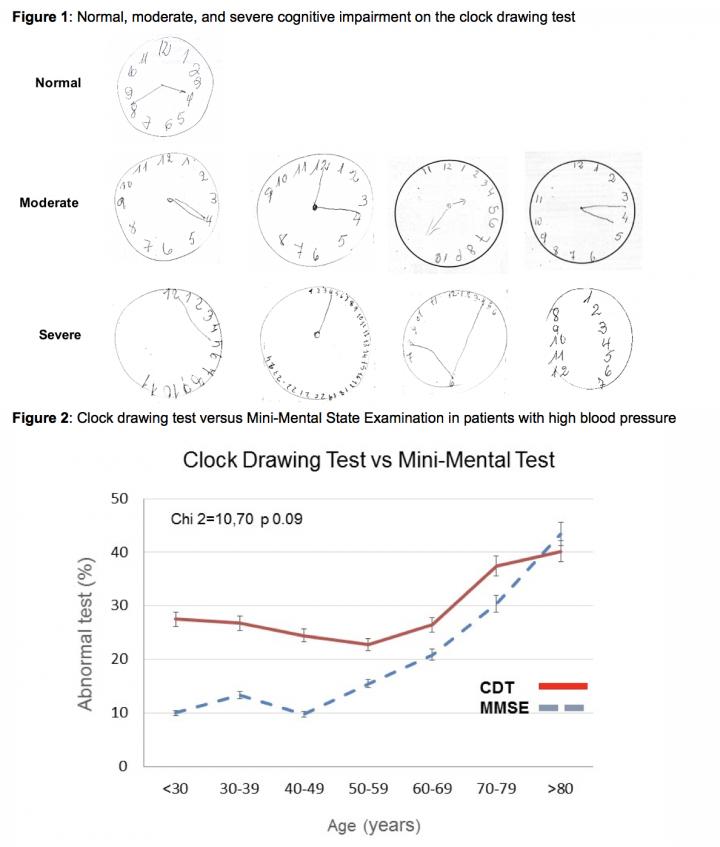According to research presented at ESC Congress 2018, a clock drawing test for detecting cognitive dysfunction should be conducted routinely in patients with high blood pressure. Hypertensive patients with impaired cognitive function are at an increased risk of developing dementia within five years. However, despite this known risk factor, cognitive function is still not routinely measured in patients with high blood pressure.
"The ability to draw the numbers of a clock and a particular time is an easy way to find out if a patient with high blood pressure has cognitive impairment," said study author Dr Augusto Vicario of the Heart and Brain Unit, Cardiovascular Institute of Buenos Aires, Argentina. "Identifying these patients provides the opportunity to intervene before dementia develops."
The Heart-Brain Study was conducted in Argentina to evaluate the usefulness of the clock drawing test compared to the Mini-Mental State Examination (MMSE) to detect cognitive impairment. The study included 1,414 adults with high blood pressure who were recruited from 18 cardiology centres in Argentina. The average blood pressure of the study participants was 144/84 mmHg while their average age was 60 years. 62% of the participants were women.
Each patient was given a piece of paper with a 10 cm diameter circle on it and was asked to write the numbers of the clock in the correct position within the circle. They were also asked to draw hands on the clock indicating the time "twenty to four". Patients were scored as having normal, moderate, or severe cognitive impairment (see figure 1). Compared to the clock test, the MMSE had 11 questions and produced a score out of 30 indicating no (24-30), mild (18-23), or severe (0-17) cognitive impairment.
Study researchers found a higher prevalence of cognitive impairment with the clock drawing test (36%) compared to the MMSE (21%). Three out ten patients who had a normal MMSE score had an abnormal clock drawing result. This difference was most prominent in the middle-aged group of patients.
Dr Vicario said: "Untreated high blood pressure silently and progressively damages the arteries in the subcortex of the brain and stops communication between the subcortex and frontal lobe. This disconnect leads to impaired 'executive functions' such as planning, visuospatial abilities, remembering details, and decision-making. The clock drawing test is known to evaluate executive functions. The MMSE evaluates several other cognitive abilities but is weakly correlated with executive functions."

Overall, the study findings suggest that the clock drawing test should be preferred over the MMSE in patients with high blood pressure as it can help detect cognitive dysfunction much earlier. The clock drawing test may be considered a surrogate measure of silent vascular damage in the brain and can help identify patients who are at a greater risk of developing dementia.
Dr Vicario concluded: "The clock drawing test should be adopted as a routine screening tool for cognitive decline in patients with high blood pressure. Further studies are needed to determine whether lowering blood pressure can prevent progression to dementia."
Source: European Society of Cardiology
Image Credit: Dhru4you via Wikimedia Commons
Latest Articles
#ESC2018
A clock drawing test for detecting cognitive dysfunction should be conducted routinely in patients with high blood pressure, according to research presented today at ESC Congress 2018.







